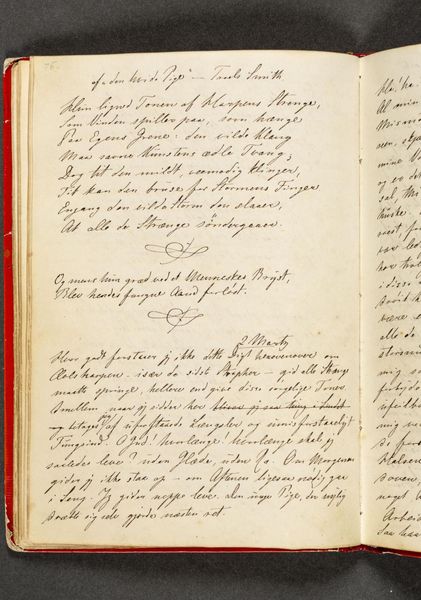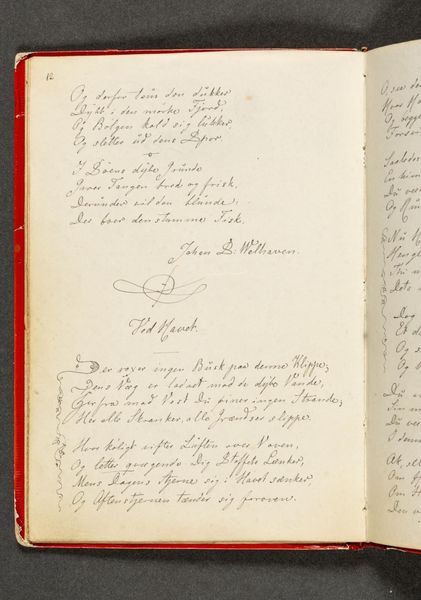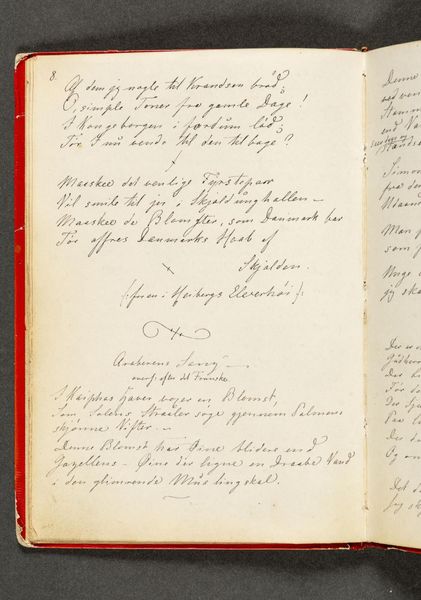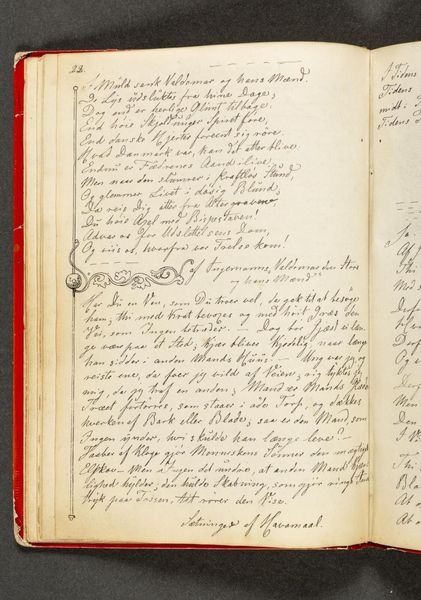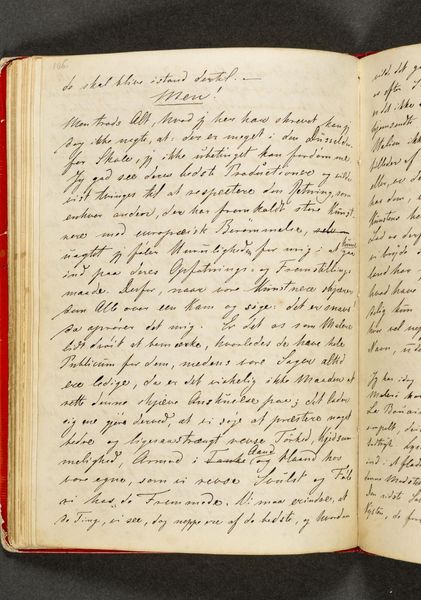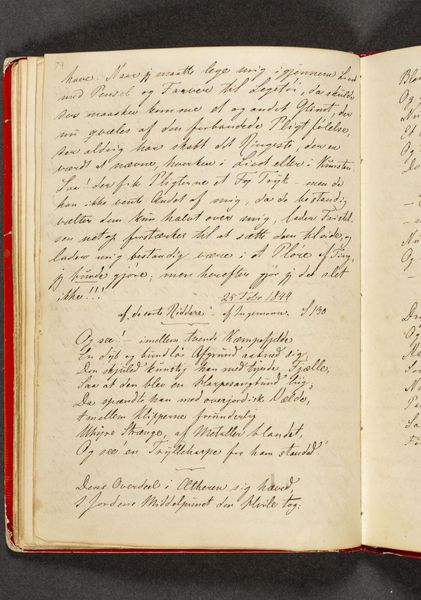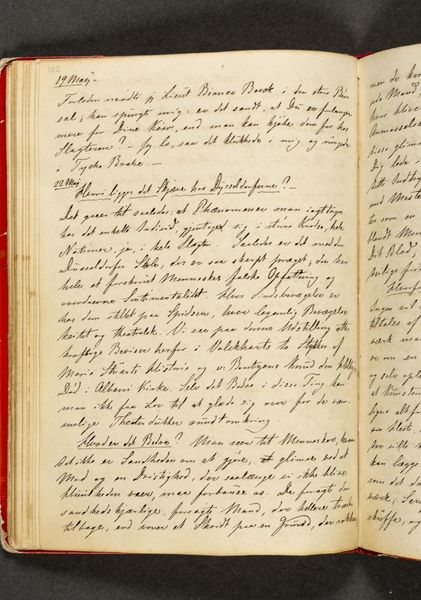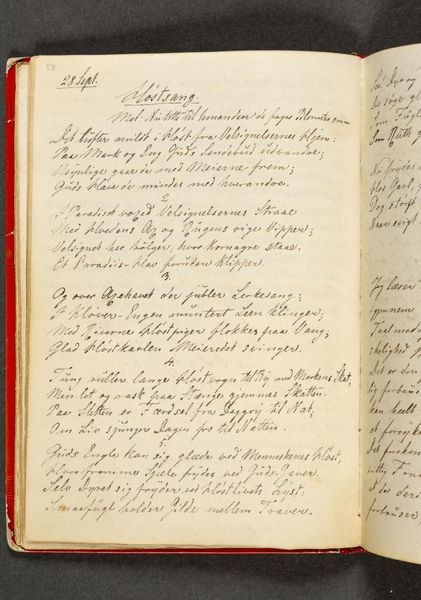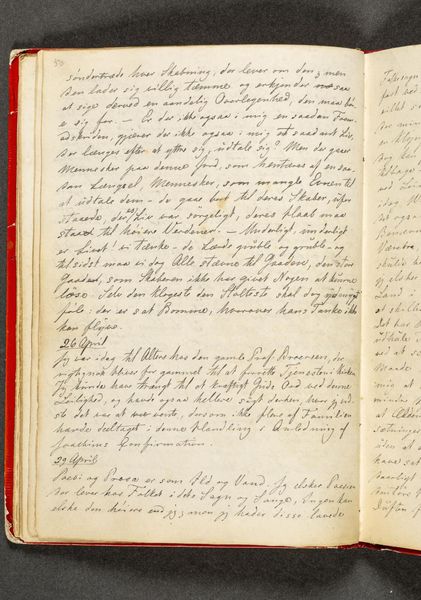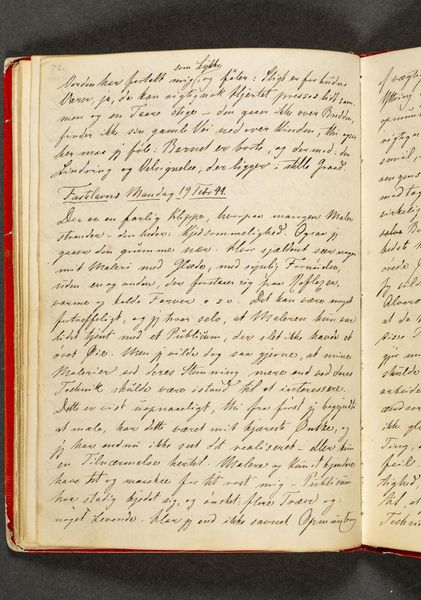
drawing, mixed-media, textile, paper, ink
#
drawing
#
mixed-media
#
textile
#
paper
#
ink
#
romanticism
Dimensions: 192 mm (height) x 133 mm (width) (bladmaal)
Curator: Welcome. The artwork before you is titled "Vers. Side 28," a creation of Johan Thomas Lundbye between 1840 and 1844. It's currently housed here at the SMK. Looking closely, we can see that it involves drawing, but utilizes mixed media—specifically ink, paper, and even textile components. Editor: It strikes me as rather intimate. The scale suggests a private journal or perhaps a collection of personal musings, more sketch than finished artwork, especially given its dedication to handwriting. The open notebook format enhances that feeling of immediacy, like stepping into someone's thoughts mid-stream. Curator: I think you’re right to read it that way. Consider how drawing practices, like keeping sketchbooks, became a key aspect of Romanticism. These served not just as studies for grander works, but also as a space for artists to explore feelings, to engage with direct, unfiltered observation. The materials – ink and paper combined with textiles from bookbinding processes – were cheap and portable; thus perfectly suited for travel. Editor: Definitely, and the use of handwritten text woven so inextricably with the visual suggests the symbology of written language. The looping script gives it such texture; an echo of nature described. There are verses here, perhaps even multiple layers or different pieces over time on the same set of pages… note the difference in penmanship at the very bottom. What stories do these pages silently tell? Curator: I hadn't considered the textile binding, it invites us to see it within its historical context. How bookmaking at this time employed skilled laborers. And Lundbye's use reflects the burgeoning print culture accessible to middle-class. Editor: Yes, this adds dimension. The convergence of textual symbols alongside images enhances a unique interplay; it serves both aesthetic appeal yet simultaneously imparts an expressive narrative...It reflects broader themes resonating across the era regarding literature’s relation to nature! Curator: Seeing it this way, considering the raw material involved— cheap paper that allows ink to be the vessel for literary content is rather enlightening Editor: And the emotional, psychological weight inscribed onto each character underscores connections binding creativity itself into corporeal matter: a thought expressed in physical reality forever preserved by these very tools… Curator: Indeed, our explorations have revealed layered historical influences intertwined creatively across literary practices Editor: Yes - and also psychological ones reflected upon inkblots merging within verse through tactile touch from handwriting which gives enduring power transcending any artistic form existing.
Comments
No comments
Be the first to comment and join the conversation on the ultimate creative platform.
